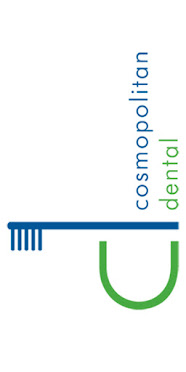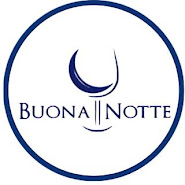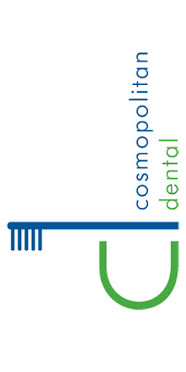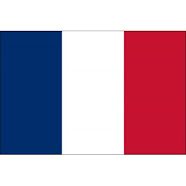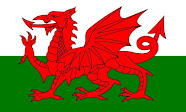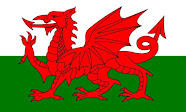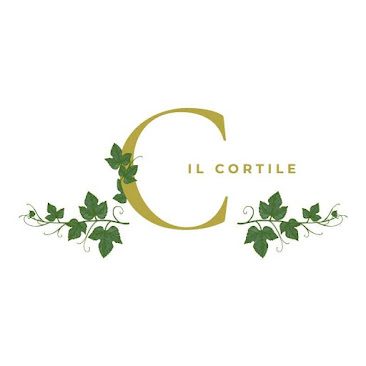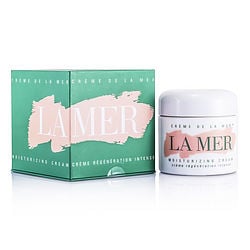All Columns in Alphabetical Order
Sunday, December 14, 2025
#CulturedPeachy #CruisingPeachy @CorvetteRacing National Corvette Museum Announces 2026 Programming
Preserving Corvette History and Building for the Future
National Corvette Museum Announces 2026 Programming
(December 11, 2025) Bowling Green, KY - As the National Corvette Museum shifts gears to 2026, it promises to be a year full of new exhibitions, events, and programming that put Corvette and the Corvette community at the center of automotive culture. Here’s what’s on the roadmap:
NEW Exhibition: Driven To Preserve
Opening March 12, 2026, Driven to Preserve is rooted in the Museum’s mission to collect, preserve, and share the legacy of America’s Sports Car. The exhibition highlights the methods, decisions, and values that guide the Museum’s stewardship of its collection. More than a dozen rarely seen Corvettes and interpretive displays will showcase how staff manage the movement of vehicles, catalog objects, and care for rare materials in a way that aligns with museum standards. Vehicles on view will include a 2003 Corvette Z06 Callaway, a 2006 Corvette Z06 Lingenfelter Twin Turbo, and a 2011 Corvette ZR1.
NEW Expanded Corvette Hall of Fame
The National Corvette Museum’s expanded and reimagined Corvette Hall of Fame shines a brighter spotlight on the incredible individuals who’ve shaped the Corvette legacy. Anchored by the freshly-preserved 1974 Stingray that was the only Corvette owned by the “Godfather of the Corvette” and Hall of Fame inductee Zora Arkus-Duntov, this revitalized space celebrates the passion, innovation, and contributions of Hall of Fame members in a way that captures their stories like never before.
NEW Collections Facility
A new 66,000-square-foot collections facility is under construction on the Museum campus. When completed in 2026, the building will provide dedicated space for long-term storage, vehicle preservation, and artifact conservation. Beginning in early 2027, the facility will also serve as an educational setting where visitors can take guided tours of the facility and witness firsthand how the Museum cares for its growing collection.
NEW Events and Adventures
The National Corvette Museum is set to make 2026 a landmark year with more than 20 sponsored events celebrating Corvette culture across the country and around the globe. Highlights include the return of the R8C Reunion (June 25–27), honoring the more than 20,000 Corvette owners who participated in the Museum’s delivery program, and two of the Museum’s signature gatherings—the Michelin National Corvette Museum Bash (April 23–25) and the Anniversary Celebration and Hall of Fame Induction (September 3–5). From the scenic routes of the Kentucky One Lap to Museum in Motion tours to Daytona International Speedway, 2026 promises unmatched experiences for Corvette enthusiasts worldwide.
November 2026: Military Appreciation Month
The National Corvette Museum will once again thank active duty, retired, and veteran military members for their service with free admission throughout November as part of our Military Appreciation Month celebration. 2026 will also welcome the return of Vets ‘n Vettes to the NCM Motorsports Park. Since 2008, this event has united veterans, Corvette drivers and patriots for an event that includes track time, scenic drives, and participation in the Bowling Green, KY, Veteran’s Day Parade.
Educational Programming for the Next Generation
The McMichael Family Education Center provides hands-on exhibits and activities that support learning in automotive design and engineering. The Museum will offer expanded educational programs and new learning opportunities in 2026 to continue this work and reach new audiences.
A Delivery Experience for All Generations
2025 was a banner year for Corvette and the National Corvette Delivery programs. The popular R8C factory delivery option achieved a new milestone with 20,000 deliveries at the Museum, including the first eighth-generation ZR1s delivered through the R8C program. For Corvette owners of any generation, the National Corvette Museum Delivery Experience provides the same VIP experience as an R8C Delivery: the once-in-a-lifetime opportunity to have your Corvette displayed inside the National Corvette Museum.
Plan Your Visit
Conveniently located off Interstate 65 in Bowling Green, KY, just an hour North of Nashville, the National Corvette Museum offers something for everyone. Whether you’re a lifelong Corvette enthusiast or a first-time visitor, 2026 at the National Corvette Museum is about making memories, preserving Corvette history, and building for the future. For more details, visit www.corvettemuseum.org.
About The National Corvette Museum
The National Corvette Museum, a 501(c)(3) not-for-profit foundation, is where Adrenaline Meets Tradition by serving as an educational and research institution with the mission of educating worldwide audiences on the evolution of the Corvette—America’s Sports Car—through the collection, preservation, and celebration of its legacy. Located a mile from General Motors Bowling Green Assembly Plant, which has manufactured every Corvette since 1981, the Museum Campus features 115,000 square feet of exhibit and event space, more than 120 historically significant Corvettes, 50,000 Corvette artifacts, and the NCM Motorsports Park. For more information or to plan your visit, visit corvettemuseum.org or follow the Museum on Facebook, TikTok, LinkedIn, Instagram, YouTube, and X.
#NewYorkNotes @RecordingAcad @GRAMMYMuseum GRAMMY Museum®’s Industry Sessions Now Available for Graduate Extension Credit In Partnership with Inspire Edu
The GRAMMY Museum® is proud to announce that its Industry Sessions — a suite of online courses designed to equip emerging music creators, professionals and educators with industry-relevant knowledge are now eligible for graduate extension credit, in collaboration with Inspire Edu. This new credentialing option adds significant academic value to the Museum’s celebrated professional-learning portfolio.
The Industry Sessions lineup includes immersive six-week online courses such as Songwriting 101 taught by Anika Paris, Content Creator 101 taught by Yulia Gonzalez, Music Business 101 taught by James McKinney, and Music Production 101 taught by Marcus Marshall with guest professionals curated by Live Out L!VE. Participants may enroll hour-free for non-credit access or register for graduate extension credit for a fee through the Inspire Edu partnership.
“We’ve seen a growing number of educators participating in Industry Sessions as a way to stay current with today’s music industry,” said Arin Canbolat, VP of Education and Community Engagement at the GRAMMY Museum. “By offering graduate extension credit, we’re able to support teachers in meeting continuing education requirements while also giving them practical, industry-informed learning they can bring directly back to their students.”
Highlights of the Industry Sessions program include:Flexible online format for ages 18+ with global access
Direct engagement with music-industry professionals via moderated Q&A, enabling real-time learning and networking
Graduate-level extension credit through Inspire Edu, enabling accredited recognition for professional development and career progression
Diverse course topics – including songwriting, content creation, music business fundamentals, and hands-on production using DAWs
Applications are open now for the Spring 2026 sessions, with enrollment deadlines and start dates published on the Museum’s website.
For applications and details, visit: HERE
about the grammy museum
The GRAMMY Museum is a nonprofit organization dedicated to celebrating and exploring music from yesterday and today to inspire the music of tomorrow through exhibits, education, grants, preservation initiatives, and public programming. Paying tribute to our collective musical heritage, the Museum values and celebrates the dynamic connection in people’s diverse backgrounds and music’s many genres, telling stories that inspire us, and creative expression that leads change in our industry.
For more information, visit www.grammymuseum.org, “like” the GRAMMY Museum on Facebook, and follow @GRAMMYMuseum on Instagram and TikTok.
ABOUT INSPIRE EDU
Inspire EDU is a national leader in arts, media, and entertainment (AME) education, providing schools and organizations with industry-aligned curriculum, digital badges, professional development, and work-based learning solutions. With a team grounded in both creative industries and education, Inspire EDU builds pathways that prepare learners for real-world careers while supporting educators with practical, high-quality resources. Through innovative programming and strategic partnerships, Inspire EDU helps institutions expand access, strengthen student engagement, and elevate AME learning across diverse communities.
#InauguralReview #MezzaLunaPizza Since 1976 by #JoeLoPresti 600 East 187th Street at Arthur Avenue Bronx Little Italy
Whether you choose a straight cheese pizza, the piece de resistance here, or a pizza where you choose the toppings, you can see that Mezza Luna Pizza is in it to win it
It's not who you know, it's WHOM YOU KNOW and now we know Owner Joe Lo Presti of Mezza Luna Pizza in Bronx Little Italy! Pelham Park native Joe Lo Presti became the owner on January 4, 2024 and he tells us Mezza Luna Pizza is 100 percent Sicalian. Joe was born in New York, but his parents are from Sicily. You know it's got to be something special if Peachy Deegan is leaving Manhattan, and it impressed us on our first visit, outperforming some competition we have considered and never published on in outer boroughs and even some in Manhattan.
Zucchini, Eggplant and Carrots teamed up for a trifecta of grilled vegetable nutrition to start us off right! They also offer sauteed vegetables (not featured in this review.) This announces they are not just a neighborhood pizza place and we found their menu to have tremendous depth, which is one reason why we wanted to find out more. Also, they have endured for 50 years.
We count four salad choices which is a solid showing. We chose the Caesar, above and added grilled chicken, which was perfection. It was perfectly grilled and served just warm enough to welcome you properly. Some places are pushy about their salad dressing, especially with Caesar Salads, but Mezza Luna Pizza demonstrates hospitality by putting it on the side as we asked. AND PEACHY ACTUALLY LIKED IT! If you have read our 30,000 other or so posts you know it is a rarity to find dressing she likes. Cobb Salad arrived in style with hard-boiled eggs ideally quartered vertically which actually is how we like it (and also how we like fresh meyer lemons in water at all venues) and we didn't even ask for the eggs this way, lettuce, red onion, cheese, carrots, mushroom and bacon (obviously our favorite vegetable.) This arrived with house vinaigrette and balsamic on the side and all elements were fresh and fantastic.
We are huge fans of Fettuccine Alfredo, and the rendition at Mezza Luna Pizza hits the spot. They even have shrimp and it's excellent. You absolutely cannot say that for many pizza places. This dish was fragrant, rich and creamy with the ideal dusting of parsley and grated cheese. If you are new to us, you ought to know we do not edit pictures. You excel like Joe, or we do not publish. To that end, the Fettuccine Alfredo insisted on some glamour shots:
Hot on its heels was one of our all-time-favorites: Chicken Parm. Obviously everyone knows of Chicken Parm Peachy where the best Peachy's Picks are featured, and she might be the only one with a column devoted to this dish. Mezza Luna Pizza serves up a solid performance with delicious chicken and mozzarella!
The Manicottis is absolutely to-die-for. It was the first item that magically disappeared in totality from this review and actions speak louder than words, readers. We absolutely adored the cheese element in it.
Some people in New England call them subs, Peachy because she is from Connecticut calls it a grinder but in New York the sandwiches are called heroes. We took the healthy route with the convincing Grilled Chicken with Lettuce and Tomato, essentially elevated with the proprietary pesto which you ought to try! The freshness and flavor won us over.
Obviously if a venue is calling themselves a Pizza Place and has the word Pizza in their name, it better be great~! And it is here. There are a myriad of toppings covering the traditional spectrum as well as the extras and they even have Gluten-Free Pies (however, Peachy considers Gluten a close friend as you may have heard.) We chose Mushrooms, Tomatoes, Peppers, Onion and Spinach and if you read carefully you know Peachy adores Garlic and even though that was not a menu option, they put it on for her! The vegetable extravaganza was a nutritional triumph and ultimately delicious.
However, we might have liked the cheese pizza even more because we really like the cheese they use and feel this cheese pizza in particular could be habit-forming, in a good way.
This is only the second time Peachy has ever been to Arthur Avenue and so far the neighborhood is two for two! So yes, you absolutely have got to experience the North. Or maybe it is Northeast to be technically correct...Peachy's stomach does not have a compass. But it is definitely delicious so far and these places are enduring!
Mezza Luna Pizza impressed us on our first visit and we can't wait to see what they do next.
Their website tells us:
From Learning to Cook at 16
Generations of family recipes brought to life in every pizza, pasta, and calzone we serve
A Family Tradition Passed Down
Our menu began with thin-crust and Sicilian pies made fresh each morning. Over time, we added pasta, calzones, wraps, paninis, salads, and more—recipes rooted in our Sicilian home. Each dish is made daily to keep that promise of honest, homemade cooking. It’s not just about what’s on the plate; it’s about bringing a bit of our story to every table and making every meal feel like family dinner.
More Than Just a Restaurant
Mezza Luna Pizza isn’t just a business for us. It’s a place built on family values, hard work, and staying true to our roots. Every pizza, pasta, and calzone carries the story of where we came from and what we believe in: fresh food, warm service, and a space where everyone feels welcome. Our guests aren’t just customers—they become part of the story we’re still writing every single day.
Looking Toward Tomorrow
After fifty years, our traditions still guide us, and our family keeps growing with every new guest. We hope you’ll keep sharing this journey—whether you stop by for a quick slice, order a meal for home, or trust us to cater your next event. Our promise is to serve real recipes, honest flavors, and the same spirit that brought us from a small kitchen in Italy to the Bronx.
Read more...
#NewYorkNotes #LondonPeachy UNIVERSAL MUSIC GROUP ANNOUNCES NEW UMUSIC SHOPS IN NEW YORK AND LONDON
New openings further expand the brand’s global retail footprint, creating spaces that bring fans closer to the artists and culture they love
Universal Music Group (UMG), the world leader in music-based entertainment, in partnership with UMusic Hospitality & Lifestyle, its entertainment driven hospitality venture, today announced the opening of two new UMusic Shop locations in New York and London, dedicated to reimagining the fan experience.
Each UMusic Shop offers exclusive custom collections and pieces inspired by UMG’s iconic artists, songwriters and legendary labels, providing fans with new dedicated locations to meet, share and enjoy exclusive experiences that bring them closer than ever before to the artists they love.
UMusic Shop NY opens today, Wednesday, December 10, at 2 Penn Plaza, becoming UMG’s first permanent brick-and-mortar superfan retail experience in North America that offers a new cultural hub for music and style in the heart of Manhattan.
The store opens with a special Holiday transformation, complete with festive windows and a curated selection of vinyl, merchandise, and accessories from UMG’s artist roster including Olivia Rodrigo, Billie Eilish, Ariana Grande, Elton John, Rolling Stones, Post Malone, Beastie Boys, NAS, KISS, and many more. To celebrate the opening, UMusic Shop NY has also partnered with New York’s own Awake NY on an exclusive capsule collection: the UMG x Awake NY “Music Is Universal” drop, available only at the shop. This week, UMusic Shop NY will also transform with the premiere of two fan-driven pop-ups honoring the songs of Neil Diamond and celebrating the upcoming release of Song Sung Blue in cinemas later this month (December 11) and Republic Records artist Conan Gray (December 12).
Opening Tuesday, December 16, UMusic Shop Camden will bring the UMusic retail experience to one of London’s most iconic cultural districts. Located in the heart of Camden Market, the space will serve as a creative hub where music, fashion, and design collide. Designed to capture Camden’s rebellious spirit and deep musical roots, the shop will feature exclusive artist collections, immersive installations, and live performances, along with a Vinyl Lounge, DJ booth, and recording studio-inspired Sound Room that allows fans to experience music like never before.
In making the announcement, Susan Mazo, EVP & Chief Impact Officer at Universal Music Group said, “The launch of these two stores in New York and London further expands on our longstanding commitment to enhancing the ability of UMG’s iconic roster of artists, labels, songwriters, and brands to connect with their fans through exclusive experiences, merchandise, and bespoke collections. Both cities and locations have rich and deep connections with music culture, and we are excited to introduce these new hubs for fans to meet, share, and connect with the music, artists, and songs they are most passionate about.”
These new locations build on earlier launches in Madrid and in the heart of Tokyo’s vibrant Harajuku district. Each UMusic Shop destination brings fans closer to the artists they love and, together, they help cultivate an expanding global fan community.
About UMusic Shop
UMusic Shop is part of a global venture between Universal Music Group and UMusic Hospitality & Lifestyle, created to bring the spirit of UMG’s iconic artists and labels into retail and everyday life. Each shop seamlessly blends music, creativity, and design to deliver experiences that extend far beyond traditional retail, from exclusive collaborations, artist-driven collections, to pop-up activations and curated cultural programming.
Rooted in its local community, UMusic Shop transforms physical spaces into creative meeting points where fans, artists, and brands connect through the universal language of music.
About Universal Music Group
Universal Music Group exists to shape culture through the power of artistry. UMG is the world leader in music-based entertainment, with a broad array of businesses engaged in recorded music, music publishing, merchandising and audiovisual content. Featuring the most comprehensive catalogue of recordings and songs across every musical genre, UMG identifies and develops artists and produces and distributes the most critically acclaimed and commercially successful music in the world. Committed to artistry, innovation and entrepreneurship, UMG fosters the development of services, platforms and business models in order to broaden artistic and commercial opportunities for our artists and create new experiences for fans. For more information, visit www.universalmusic.com.
#FrancePeachy #DesignPeachy VAND International Launches Global Design Value Evaluation for the World's 100 Leading Brands
New French-based initiative measures how design protects attention, supports mental clarity, and builds a responsible visual culture
VAND International has begun an independent evaluation of the design value of INTERBRAND’s world’s Top 100 brands, from its headquarters in France, describing it as the first systematic global review focused on the human and cognitive impact of design – not just how it looks.

Rather than celebrating surface-level aesthetics or trend-driven creativity, the VAND evaluation examines how brand design affects people’s attention, mental well-being, and sense of calm in a world saturated with visual stimuli. The goal is to provide a transparent, internationally recognized measure of “design value” that reflects clarity, coherence, and responsibility in the way brands communicate.
“Design has become one of the most powerful forces shaping how we think, feel and make decisions,” said Touraj Saberivand, founder of VAND International. “Yet there is still no shared global standard for understanding whether design is helping people or overwhelming them. With this evaluation, we want to recognize brands that treat human attention as something to be protected, not exploited.”
A global jury of leading designers
The evaluation is overseen by a jury of designers, educators, and creative leaders from 28 countries, reflecting a broad spectrum of cultural perspectives and design traditions. Among the jury members are renowned figures, including Lindon Leader, designer of the iconic FedEx logo; Ken Cato, chairman of Cato Brand Partners; Sean Adams, former AIGA president and chair of Graduate Design at ArtCenter College of Design; and Armando Milani, the internationally acclaimed Italian designer known for his humanitarian work.
These jurors bring decades of experience across identity design, branding, education, and social impact.
Criteria that look beyond style
VAND’s approach draws on its broader mission to champion “calm, human and responsible design” as the next era of visual communication. Instead of focusing on novelty or visual spectacle, the evaluation framework looks at three main dimensions:
• Mental clarity: Does the design help people quickly understand what is being communicated, or does it add unnecessary complexity and noise?
• Communication coherence: Are the visual elements, messages, and interfaces aligned across touchpoints, or do they create cognitive friction and confusion?
• Responsibility of visual ecosystems: Does the brand treat users’ attention and emotional state with care, or does it overload them with stimuli, manipulative tactics, or cluttered interfaces?
This methodology builds on VAND’s existing “Human Calm” criteria used in its design awards, which measure how design choices influence comprehension, comfort, and psychological calm rather than simply rewarding personal taste or visual fashion.
“Many awards still treat design as a competition in originality,” Saberivand added. “We look at something different: how design lives in everyday life and how it affects the people who have to see it, read it and use it hundreds of times a day.”
From Top 100 brands to companies of all sizes
While the current review focuses on the world’s Top 100 brands by global visibility and influence, VAND has opened the same evaluation process to companies of all sizes and sectors. Organizations can now apply to receive an independent assessment of their design systems and, if they meet the standards, the official VAND Certified designation issued in France.
Applications are already being received from businesses across retail, technology, finance, health, education, and culture. Many are seeking not just recognition, but a structured way to understand whether their visual communication is truly serving people.
“Companies have learned to report on their environmental impact and corporate governance. We believe design responsibility will be the next frontier,” said the VAND founder. “The VAND Certified mark tells the world that a brand is not only visually sophisticated, but also mindful of the psychological and cultural consequences of its design decisions.”
Certified companies may use the Vand Certified mark on their packaging, digital platforms, communication materials, and institutional documents to showcase their design system's human-centric approach.
About VAND International
Based in Lyon, France, VAND International is a design team dedicated to promoting ethical, human-centered, and socially responsible design practices worldwide. Through evaluations, awards, education programs, and its Design Responsibility Movement, VAND works with designers, brands, and institutions to define and uphold higher standards in visual communication.
For more information about the Design Value Evaluation, the VAND Certified mark, and how to apply, visit vand.org.
Read more...
#ItalyPeachy #ChezPeachy A tangible commitment to sustainability: Cersaie awarded ISO 20121 certification by Bureau Veritas
At an event held yesterday at the Bologna Exhibition Centre, the international certification body Bureau Veritas Italia formally awarded Cersaie the ISO 20121:2024 certification for “Event sustainability management systems – Requirements with guidance for use”. The certificate was presented by Roberta Prati (Certification Director) and Antonella Fabbri (Senior Large Client Manager, Certification Division) to Armando Cafiero, Director General of Confindustria Ceramica. Also attending were BolognaFiere Director General Antonio Bruzzone, Angelo Dall’Aglio (Executive Manager CERSAIE), Simone Mosconi (Confindustria Ceramica – Head of the ISO 20121 Management System) and Claudio Pellizzari (Artea).
The ISO 20121 standard, developed by the International Organization for Standardization (ISO), defines the management system requirements an organisation must meet in order to plan and deliver sustainable events.
For the show’s 2025 edition, Cersaie’s organisers voluntarily adopted a Sustainable Management System to bring together and formalise the numerous positive initiatives implemented over previous years.
This certification confirms the effectiveness of Cersaie’s policies and strengthens the organisers’ commitment to further consolidating the show as a global benchmark for the sector and as a model of operational excellence and sustainability. ISO 20121:2024 certification represents an added value for all stakeholders, partners and participants, encouraging the organisers to pursue responsible innovation with ever greater determination.
In line with this commitment, the sustainability performance of the recently concluded edition of Cersaie is currently being evaluated. The results will be shared transparently and used to further improve the performance of future editions.
“This result recognises the work of everyone involved in organising Cersaie and is a strong incentive for us to continue improving,” said Armando Cafiero, Director General of Confindustria Ceramica. “ISO 20121 certification is not only an acknowledgment that the planning, design and execution of the show follow a verified and structured method, it is also a clear demonstration that the principles of social, environmental and economic responsibility that we share with our member companies are adopted throughout every phase and activity of Cersaie.”
Roberta Prati, Certification Director at Bureau Veritas Italia, commented: “When 95,000 people come together, as they do for Cersaie, it is essential to pay the utmost attention to safety and to the social and environmental impact of the event. Through our audits, we at Bureau Veritas are proud to recognise the efforts of organisations that adopt ISO 20121 certification as a tangible sign of their commitment to sustainability while actively involving stakeholders in the process.”
“The certification obtained by Cersaie marks a decisive step forward in the way we conceive and organise events,” commented Antonio Bruzzone, CEO of BolognaFiere. “Cersaie demonstrates that sustainability is now a central element of the trade fair experience and a value that exhibitors, buyers and international stakeholders have come to expect. The journey we have undertaken together with Confindustria Ceramica consolidates a model that combines quality, responsibility and innovation, generating tangible benefits for the entire sector. We will continue to invest in processes that create positive, measurable impacts, further raising the standards of our exhibitions.”
#NewYorkNotes @RecordingAcad @GRAMMYMuseum Recording Academy And GRAMMY Museum Honor Local Teachers Across United States As 2026 Music Educator Award Finalists
TEN MUSIC TEACHERS WILL RECEIVE CASH HONORARIUMS PROVIDED BY THE CHUCK LORRE FAMILY FOUNDATION: ONE AWARD WINNER TO BE ANNOUNCED DURING GRAMMY® WEEK
A total of 10 music teachers from 10 cities across 10 states have been announced as finalists for the 2026 Music Educator Award™ presented by the Recording Academy® and GRAMMY Museum®. In total, more than 2,000 initial nominations were submitted from 50 states. Nominations for the 2027 Music Educator Award are now open at www.grammymusicteacher.com. A complete list of finalists is below:
Name School Name City State
Jean-Paul Balmat Mission Bay High School San Diego California
Stephen Blanco Las Vegas High School Las Vegas Nevada
Jasmine Fripp Tennessee State University Nashville Tennessee
Lisa Sunset Holt Cedar Park High School Cedar Park Texas
Alyson Humphrey Smith A.C. Steere Elementary School Shreveport Louisiana
Jennifer Jimenez South Miami Sr. High School Miami Florida
Kevin McDonald Wellesley High School Wellesley Massachusetts
Bill Podolski H-B Woodlawn Secondary Program Arlington Virginia
Kevin Schoenbach Oswego High School Oswego Illinois
Matthew Shephard Meridian Early College High School Sanford Michigan
WHAT:
The Music Educator Award recognizes current educators who have made a significant and lasting contribution to the music education field and demonstrate a commitment to the broader cause of maintaining music education in the schools.
The award is open to current U.S. music teachers, and anyone can nominate a teacher — students, parents, friends, colleagues, community members, school deans, and administrators.
Teachers are also able to nominate themselves, and nominated teachers are notified and invited to fill out an application.
Each year, one recipient is selected from 10 finalists and recognized for their remarkable impact on students' lives. They will receive a $10,000 honorarium and matching grant for their school's music program. The nine additional finalists will receive a $1,000 honorarium and matching grants. The remaining 15 semifinalists will receive a $500 honorarium with matching school grants.
The Music Educator Award program, including honorariums, is made possible by the generosity and support of The Chuck Lorre Family Foundation. In addition, the American Choral Directors Association, NAMM Foundation, National Association for Music Education, and National Education Association support this program through outreach to their constituencies.
WHEN:
The recipient will be recognized during GRAMMY® Week 2026. For more information, please visit www.grammymusicteacher.com.
ABOUT THE GRAMMY MUSEUM
The GRAMMY Museum is a nonprofit organization dedicated to celebrating and exploring music from yesterday and today to inspire the music of tomorrow through exhibits, education, grants, preservation initiatives, and public programming. Paying tribute to our collective musical heritage, the Museum values and celebrates the dynamic connection in people’s diverse backgrounds and music’s many genres, telling stories that inspire us, and creative expression that leads change in our industry.
For more information, visit www.grammymuseum.org, “like” the GRAMMY Museum on Facebook, and follow @GRAMMYMuseum on Instagram and TikTok.
ABOUT THE RECORDING ACADEMY
The Recording Academy represents the voices of performers, songwriters, producers, engineers, and all music professionals. Dedicated to ensuring the recording arts remain a thriving part of our shared cultural heritage, the Academy honors music's history while investing in its future through the GRAMMY Museum, advocates on behalf of music creators, supports music people in times of need through MusiCares, and celebrates artistic excellence through the GRAMMY Awards—music's only peer-recognized accolade and highest achievement. As the world's leading society of music professionals, we work year-round to foster a more inspiring world for creators.
For more information about the GRAMMY Awards and the Recording Academy, please visit GRAMMY.com and RecordingAcademy.com . For breaking news and exclusive content, follow @RecordingAcad on X , "like" Recording Academy on Facebook, and join the Recording Academy's social communities on Instagram, YouTube, TikTok , and LinkedIn.
#ItalyPeachy #Cesarine IF YOU’RE AMONG THE LUCKY ONES SPENDING CHRISTMAS IN ITALY, DISCOVER ITS MOST MEANINGFUL HIDDEN GEM
In an era where luxury means connection and meaning, Italy’s most exclusive Christmas experiences are also its most authentic. From Venetian penthouses to countryside villas, Cesarine’s sustainable home-cooking classes invite travellers to savor Italy’s festive season with intimacy, refinement, and a delicious sense of belonging. Through Cesarine, Italy’s oldest network of certified home cooks, discerning visitors can experience a sustainable, hyper-local side of the country normally reserved for family: seasonal recipes, regional rituals, and a depth of connection that defines the new gold standard of modern luxury travel.
Venice: Gospel Choirs in St. Mark’s Square & a Penthouse Cooking Experience. Each December, Venice transforms into a timeless stage: canals glowing under winter light, the scent of pastries in the air, and the uplifting sound of gospel choirs performing in St. Mark’s Square, a cherished seasonal tradition. Just steps away, guests can join a refined gourmet cooking class inside a Venetian penthouse overlooking the canals - learning to prepare fresh pasta and tiramisu from a local Cesarina host. Book the experience (2025 dates coming soon; this annual experience is always confirmed.)
Piedmont – Turin Countryside. A sophisticated winter landscape of historic villas, elegant dining and snow-dusted vineyards awaits just outside Turin. Learn the secrets behind holiday flans, handmade tagliatelle, Christmas cookies and pastries with Cesarino Domenico.
Emilia-Romagna – Bologna Hills In the rolling countryside, travellers find warm hospitality, local markets and the heart of Italy’s pasta traditions. Uncover the technique to make cappelletto, cannelloni and lamb & capon broth with Cesarina Silvia. Modena / Maranello - In Italy’s gastronomic capital, December means handmade tortellini. Menu highlight: tortellini “in brodo” or “alla panna”. Book your Christmas food experience with Cesarina Meris
Umbria – Perugia Countryside A quiet countryside perfect for slow travel, culture and regional flavors. Dive into making croutons, cappelletti and almond “torciglione” cake with Cesarina Marisa
Puglia – Montescaglioso A charming southern hill-town where Christmas sweets and ancient traditions define the season. Discover how to prepare cartellate and pettole with Cesarina Filomena Puglia – Lecce / Salento Baroque beauty, festive markets and warm southern hospitality. Uncover the technique to make porceddhuzzi and Christamas dessert with Cesarina Lucia
Puglia – Martina Franca (near Alberobello) An iconic winter landscape of whitewashed streets and trulli rooftops. Learn the secrets behind Struffoli, Purcidd, and sweet or savory pettole with Cesarina Giovannella
Campania – Salerno / Amalfi Coast A festive city illuminated by the spectacular Luci d’Artista light installations. Guided light tour followed by a hands-on cooking session with Cesarina Silvia
Sicily – Pedara (Mount Etna Slopes) A warm, food-rich base for travellers escaping colder climates. Follow step-by-step to create scacciata, cipolline catanesi and biancomangiare with Cesarina Giampatrizia
And for travellers not heading to Italy this year, Cesarine also offers live online Christmas cooking classes, perfect as meaningful holiday gifts or as a way to bring Italy into your own kitchen. Online classes: https://cesarine.com/en/pages/online-cooking-classes
This holiday season, Cesarine invites American travellers to experience Christmas the Italian way: authentically, sustainably, deliciously.
About Cesarine Cesarine is a food experience platform connecting travelers with Italian home cooks who organize authentic culinary experiences in their homes. Founded in Bologna in 2004, Cesarine connects travelers with passionate hosts who share their knowledge, traditions, and home-cooked meals. Offering hands-on cooking classes, traditional meals, and immersive food and wine tours, Cesarine has become Italy’s most widespread network of home cooks. For the platform, which originated under the shadow of Bologna’s Two Towers and now spans the entire country, the United States remains the main market, with over 30,000 guests in 2024. Following are Australia, the United Kingdom, Canada, and Northern Europe (particularly Germany, France, and Switzerland). As a Slow Food Community and advocate of sustainable tourism, Cesarine preserves Italy’s culinary heritage while empowering local communities. Cesarine’s advisory board includes: Niccolò Branca, CEO of Fratelli Branca; Daniele Ferrero, CEO of Venchi, the Finalca Group of the Cazzola family, and CDP Venture Capital, Davide Maggi, executive director of the Digital Marketing & Communication Executive Program of the Bologna Business School, CEO of Home Food Srl, a Società Benefit, which owns the Cesarine.com platform, and the related Community of amateur cooks and chefs.
Read more...
VINEYARD VINES ANNOUNCES CONTINUED PARTNERSHIP WITH TOYS FOR TOTS THIS HOLIDAY SEASON
vineyard vines, the lifestyle brand known for its smiling pink whale and signature coastal aesthetic, is proud to announce its continued partnership with Toys for Tots, the U.S. Marine Corps Reserve–run program dedicated to collecting and distributing new toys to children in need. This holiday season, vineyard vines will once again support the nonprofit through a charitable donation on Giving Tuesday and by hosting toy drives at all store locations nationwide. Together, vineyard vines and Toys for Tots remain committed to helping ensure children and families facing economic challenges experience a brighter, more joyful holiday season.
On Giving Tuesday, vineyard vines will donate $25,000 to Toys for Tots in support of the organization's mission to deliver joy to children in need. In addition, the brand will host toy drives in all vineyard vines retail and outlet stores nationwide from December 1 through December 7, 2025. Throughout the week, stores will collect new, unwrapped toys, and customers who donate will receive a coupon for 20% off a future in-store purchase, valid from January 1 through April 1, 2026.
"Giving back has always been a big part of who we are at vineyard vines," said Shep Murray, Co-Founder and CEO of vineyard vines. "As a family-run business founded by my brother and me, supporting our communities has always been personal to us. We're really proud to continue our partnership with Toys for Tots and help brighten the holidays for kids who need it most. There's no better time than the holiday season to come together and make a difference."
With more than 870 local toy collection and distribution programs across all 50 states, Toys for Tots maintains a powerful national presence with deep, community-level impact. In 2024 alone, the organization distributed over 30 million toys to nearly 13 million children in need, helping ensure more families experienced a joyful holiday season.
"At vineyard vines, we believe that Every Day Should Feel This Good, especially during the holidays," said Ian Murray, Co-Founder and CEO of vineyard vines. "Partnering with Toys for Tots gives us a meaningful way to share a bit of holiday joy where it's needed most. It's a good reminder that even small acts of generosity can make a real difference."
"We are very pleased to welcome vineyard vines as a National Corporate Sponsor of the 2025 Marine Toys for Tots Campaign," said retired Marine Colonel Ted Silvester, Vice President of the Marine Toys for Tots Foundation. "Their community service goals certainly align with those the Marine Corps has promoted for over 75 years through our Toys for Tots Program." Silvester concluded, "With their generous support we will be able to fulfill the holiday dreams of thousands of less fortunate children who otherwise might be forgotten."
For more information, visit vineyardvines.com or stop by your local vineyard vines store.
ABOUT VINEYARD VINES
A company best known for its smiling pink whale logo, vineyard vines was founded in 1998 on Martha's Vineyard when brothers Shep and Ian Murray cut their ties with corporate America to start making ties that represented the Good Life. In addition to signature neckwear, vineyard vines offers a variety of clothing and accessories for men, women and children. Products are sold in over 600 specialty and department stores worldwide, through a seasonal catalog at 1.800.892.4982, online at vineyardvines.com and at over 100 freestanding stores.
ABOUT TOYS FOR TOTS
Toys for Tots is a U.S. Marine Corps Reserve-led program that has been distributing toys to children in need since 1947. Their mission is to collect and deliver new, unwrapped toys to less fortunate children, ensuring that every child experiences the joy of the holiday season. Through donations and partnerships, Toys for Tots continues to spread happiness and bring holiday cheer to millions of children across the United States.
Read more...
#SportyPeachy World Para Ice Hockey announces exciting partnership with CCM Hockey as official equipment supplier
World Para Ice Hockey, the international federation responsible for overseeing and developing the sport of Para ice hockey, has announced an exciting new partnership with CCM, one of the world's leading global hockey brands, as its Official Supplier for the 2026 calendar year.
This marks the first-ever global supplier agreement for World Para Ice Hockey -- a significant milestone in the sport's continued growth and professionalization. With over a century of experience outfitting the world's top hockey players, CCM brings its expertise in innovation and performance to the Para ice hockey stage for the first time.
Under the agreement, CCM will provide uniforms and equipment for all World Para Ice Hockey officiating crews at the sport's three major events in 2026: the Milano-Cortina Paralympic Winter Games, the Women's World Championships, and the World Championships C-Pool.
As the first collaboration between World Para Ice Hockey and CCM, the partnership represents a shared commitment to excellence and inclusivity.
"This is a groundbreaking global partnership for World Para Ice Hockey, highlighting how much the sport is growing, from the grassroots to the elite level," said Michelle Laflamme, World Para Ice Hockey Manager. "To have a brand with CCM's legacy and reputation believe in our mission is incredibly meaningful. We reached out to CCM for support, and they jumped on board right away. It's a huge privilege and a big boost for us as we continue building the sport for athletes, officials, and fans."
"We are incredibly proud to officially partner with the World Para Ice Hockey, which represents a significant and meaningful step in our commitment to making hockey a game for everyone. The partnership reflects the true, inclusive spirit we believe hockey embodies, and aligns with our mission to grow the game by ensuring all athletes, regardless of ability, have the opportunity to participate and excel." Robert Zaring, VP Marketing, CCM Hockey.
The partnership also underscores World Para Ice Hockey's commitment to elevating the experience for officials, who play a vital volunteer role in maintaining the sport's integrity through their on and off-ice roles throughout the year.
World Para Ice Hockey official Kevin Webinger, who has skated nearly 20 tournaments in the sport, said: "Being part of World Para Ice Hockey's officiating crew is an absolute privilege -- we get to witness the skill, passion, and resilience of these athletes up close. Having CCM's support will greatly support our ability to perform at the highest level and also confirms real recognition for the role officials play in the sport's success. It's inspiring to see a brand with such a strong hockey legacy investing in the growth and inclusivity of Para ice hockey."
As World Para Ice Hockey continues to expand its reach and impact, this collaboration represents a powerful step forward -- one that celebrates both the sport's progress and the people who make it possible.
The 2026 World Para Ice Hockey calendar will be anchored by the Milano-Cortina Paralympic Winter Games, which will take place from 6-15 March 2026, with the Para ice hockey tournament being played at the Milano Santagiulia Ice Hockey Arena. The second edition of the Women's World Championships and the World Championships C-Pool will take place later in the year, with dates and locations to be announced in due course.
About CCM Hockey
CCM Hockey is a leading designer, manufacturer, and marketer of hockey equipment. With its headquarters in Montreal, the company has operations in Canada, the United States, Europe and Asia. CCM Hockey equips more professional hockey players than any other company, including NHL and PWHL stars like Tyler McGregor, Connor McDavid, Sidney Crosby, Thatcher Demko, Kendall Coyne Schofield, Sarah Nurse, Taylor Heise and Erin Ambrose. CCM Hockey is also an official supplier of the PWHL, and the official outfitter of the American Hockey League, several NCAA Teams and KEY National Associations.
About World Para Ice Hockey
Para ice hockey is one of the five Para sports the International Paralympic Committee (IPC) acts as the international federation for as World Para Sports: World Para Athletics, World Para Ice Hockey, World Para Powerlifting, World Shooting Para Sport, and World Para Swimming. The IPC's vision is to make for an inclusive world through Para sport.
Read more...
#BigAppleBusiness Ontinue Recognized as Microsoft Security Excellence Awards Finalist for Security Trailblazer
Ontinue, a leading provider of agentic AI-powered managed extended detection and response (MXDR) services and winner of the 2023 Microsoft Security Services Innovator of the Year award, today announced it has been named a Finalist in the 2025 Microsoft Security Excellence Awards in the highly selective Security Trailblazer category. This recognition honors Ontinue's leadership in helping modernize and accelerate security outcomes for Microsoft Security customers worldwide.
The Microsoft Security Excellence Awards honor partners across multiple categories for exceptional product innovation, customer impact, operational excellence, and community leadership. Finalists represent the top-performing members of the Microsoft Intelligent Security Association (MISA), a trusted ecosystem of cybersecurity partners who integrate their solutions with Microsoft to strengthen the collective defense of organizations worldwide. The Security Trailblazer distinction is awarded to partners who demonstrate breakthrough innovation and measurable customer impact across the Microsoft security ecosystem. Ontinue's finalist placement underscores its role in advancing managed security operations for organizations operating on Microsoft Sentinel, Microsoft Defender, Entra, and the broader Microsoft Security stack.
"Being recognized as a Security Trailblazer finalist is a powerful validation of how productively Ontinue is working with Microsoft to reshape security operations through the application of Agentic AI," said Geoff Haydon, CEO of Ontinue. "Ontinue's differentiated approach, through our AI powered ION platform, is enabling customers to achieve faster outcomes, improved resilience, and greater value from their Microsoft Security platform investments. We're leading the industry with a new SecOps where AI doesn't just accelerate work, it elevates what's possible."
Ontinue continues to deliver industry-first innovation through its ION MXDR platform, which augments human experts with agentic AI and automation to contain threats fast and continuously strengthen customer security postures. At the beginning of 2025 Ontinue introduced its Autonomous Investigator agent, which has reduced the mean time to respond to incidents by 55% this year while enabling Ontinue's SOC to resolve 99.5% of all incidents on behalf of customers, reducing the burden on internal customer security teams. In September, Ontinue released its first version of a Posture Advisor agent built on Microsoft Security Copilot. The Posture Advisor agent audits Entra security policies and provides tailored recommendations to harden a customer's environment against identity-based attacks.
"I'm very pleased to extend my warmest congratulations to this year's finalists for the Microsoft Security Excellence Awards. These are presented each year to recognize the outstanding achievements of our Microsoft Intelligent Security Association members as they improve customers' ability to identify and respond to security threats. Our community is made up of the most reliable and trusted security vendors worldwide. This year we received hundreds of quality submissions from partners and Microsoft stakeholders, so this year's finalists stood out in a crowd of exceptional talent. It's my pleasure to acknowledge and celebrate their work over the past year," said Maria Thomson, Director, Microsoft Intelligent Security Association.
At the Microsoft Security Excellence Awards on January 26, 2026, Microsoft will celebrate finalists in 6 award categories honoring partner trailblazers, solution innovators, customer and technology champions, and changemakers. This is the sixth year Microsoft is recognizing partners for their outstanding work in the security landscape. All finalists are members of the Microsoft Intelligent Security Association (MISA), an ecosystem of leading security vendors comprised of software development companies and services partners that have integrated their security products and services with Microsoft's security technology.
MISA was established to bring together Microsoft leaders, software development companies and services partners to work together to defeat security threats and make the world a safer place. The industry veterans in MISA and Microsoft will vote to select the winners of the Microsoft Security Excellence Awards, providing an opportunity for colleagues to honor their peers for delivering exceptional work to our shared customers.
For more information about Ontinue ION, visit: https://www.ontinue.com/.
Relevant ResourcesRead our blog post on Microsoft's Book of News. This includes some big announcements including Predictive Shielding, Security Store going GA, and more.
Join our December 2nd webinar on Microsoft's latest pricing updates and Sentinel Data Lake. Microsoft also announced the inclusion of Security Copilot as part of Microsoft 365 E5, unlocking broad access to agentic Security AI across the enterprise without requiring additional licensing.
About Ontinue
Ontinue is a leading provider of agentic AI-powered managed extended detection and response (MXDR) services, empowering modern organizations to securely embrace their digital future. We're on a mission to redefine managed security operations with Nonstop SecOps, a 24/7 approach that delivers continuous protection through trust and innovation.
Ontinue ION leverages an agentic AI-powered platform, human expertise and our customers' own Microsoft tools to deliver tailored protection that conforms to your environment and operations. The result is fast threat detection and response, and continuous security posture hardening. With ION handling the daily security operations, CISOs and their teams get more time back in their day to focus on the next big initiative to propel their organization forward.
ION's innovative collaboration model and transparent architecture ensure that security analysts always have instant access to eyes-on-glass SecOps support and complete control of their data. Additionally, Ontinue's unparalleled Microsoft expertise helps CISOs, and CIOs maximize return on their investment in Microsoft controls and consolidate their security stack.
Read more...
Subscribe to:
Comments (Atom)











